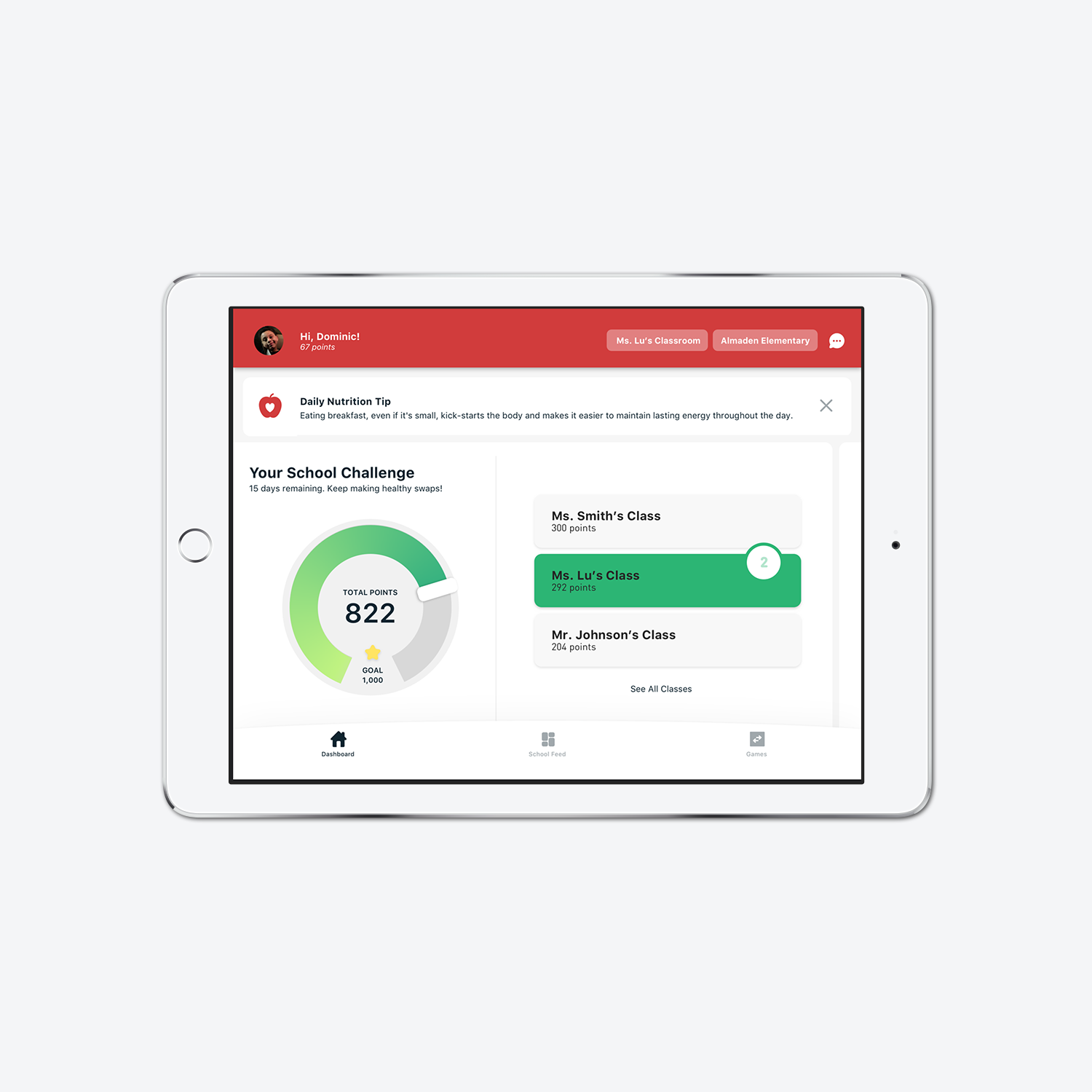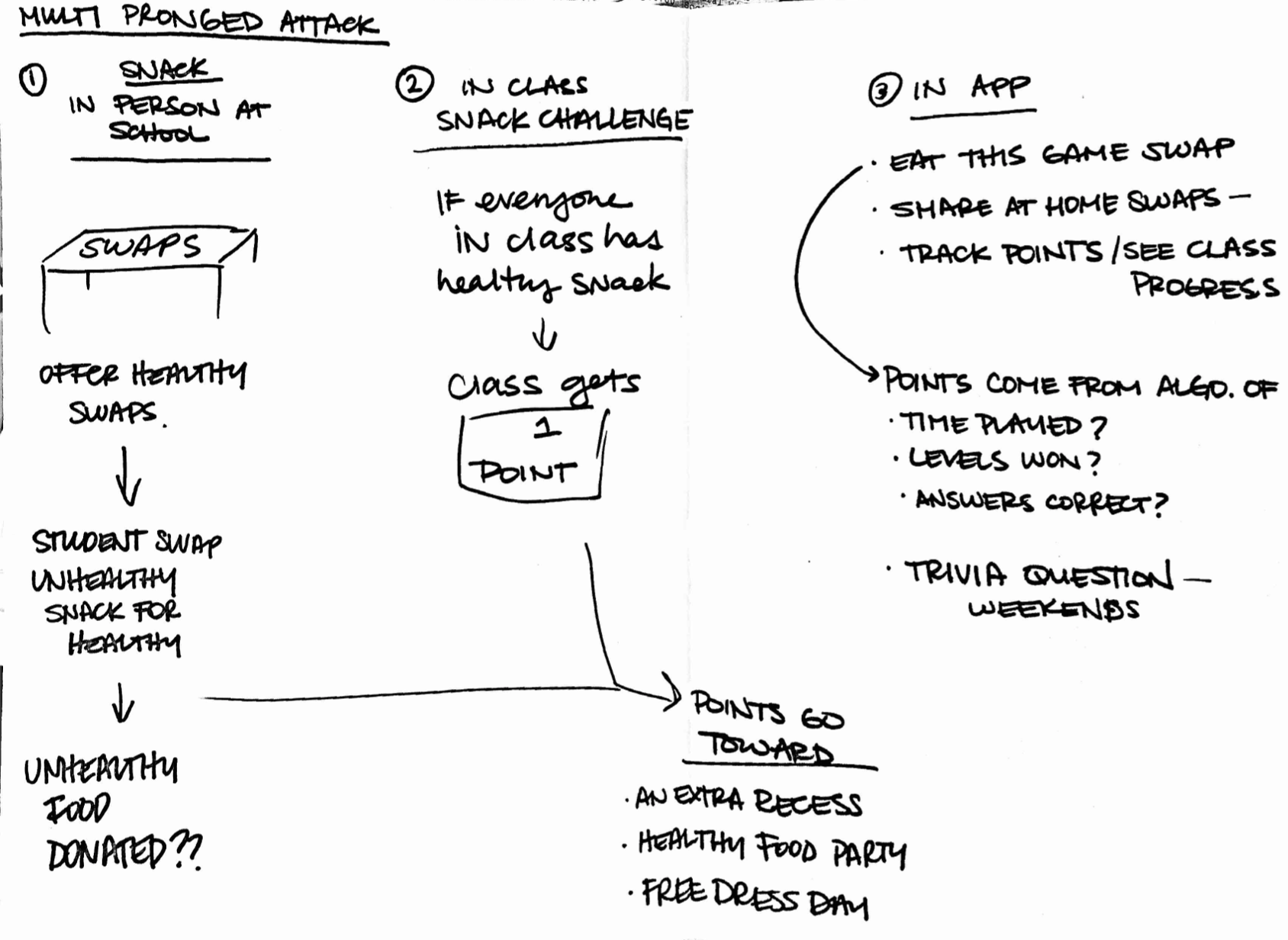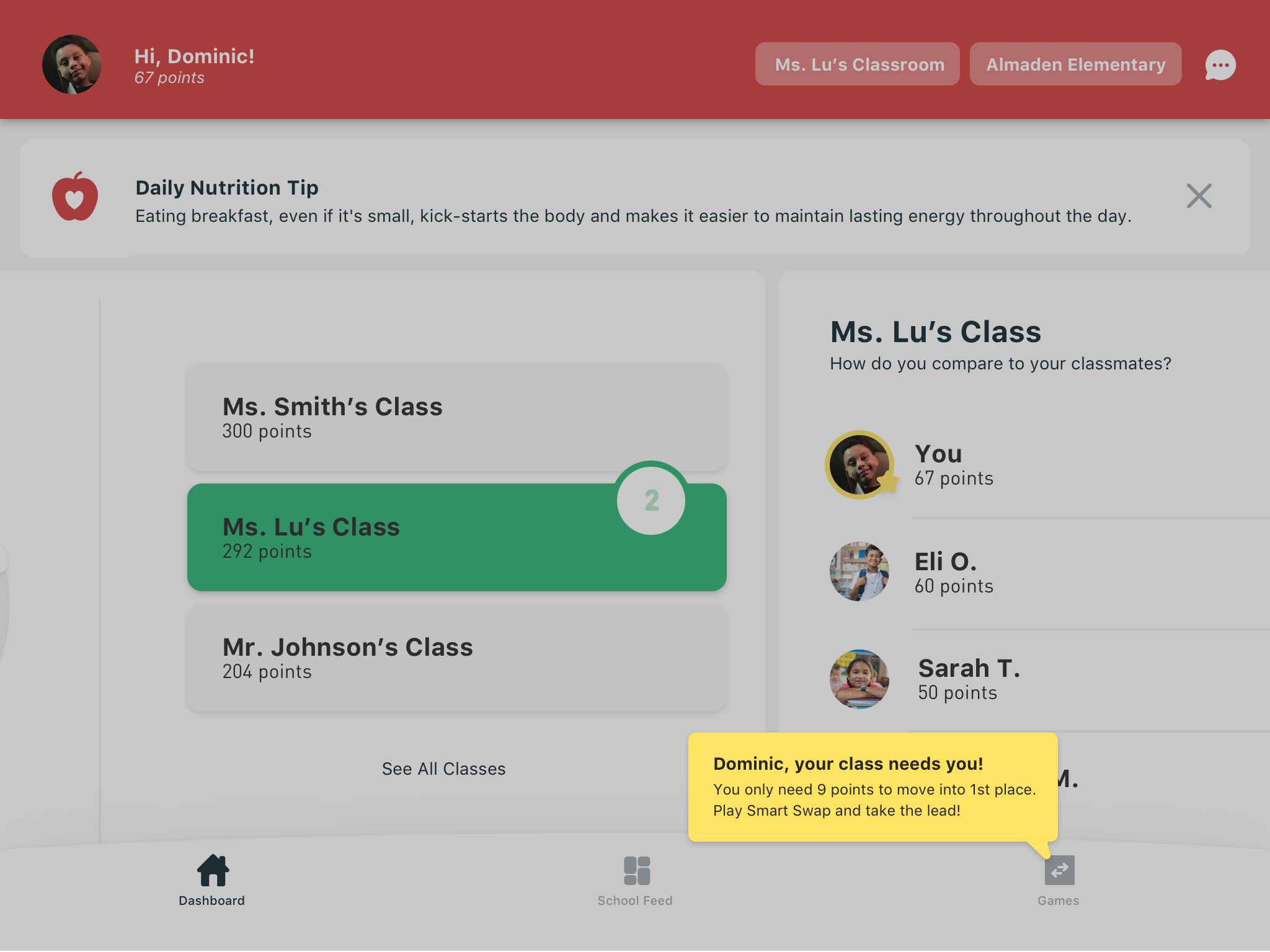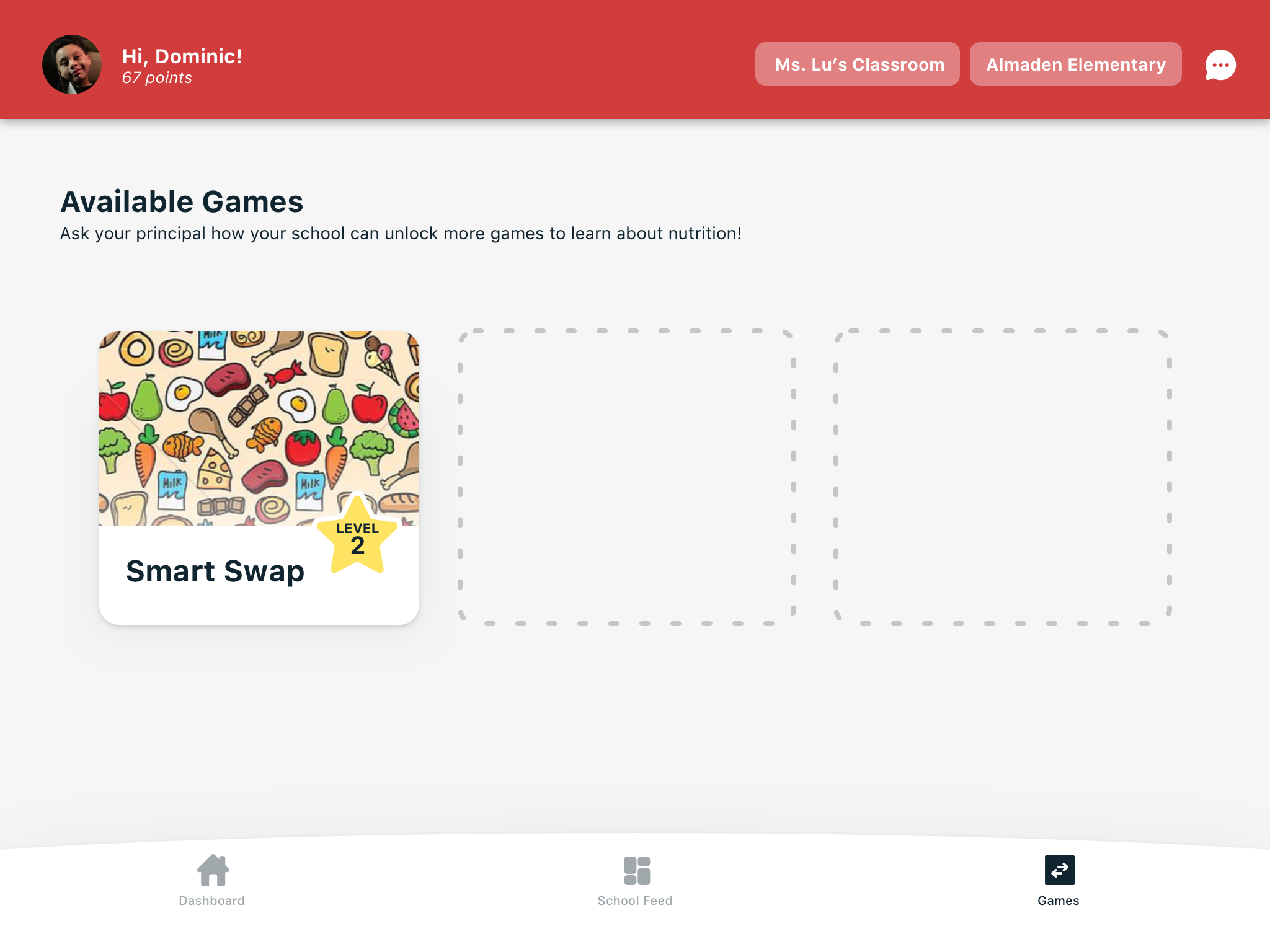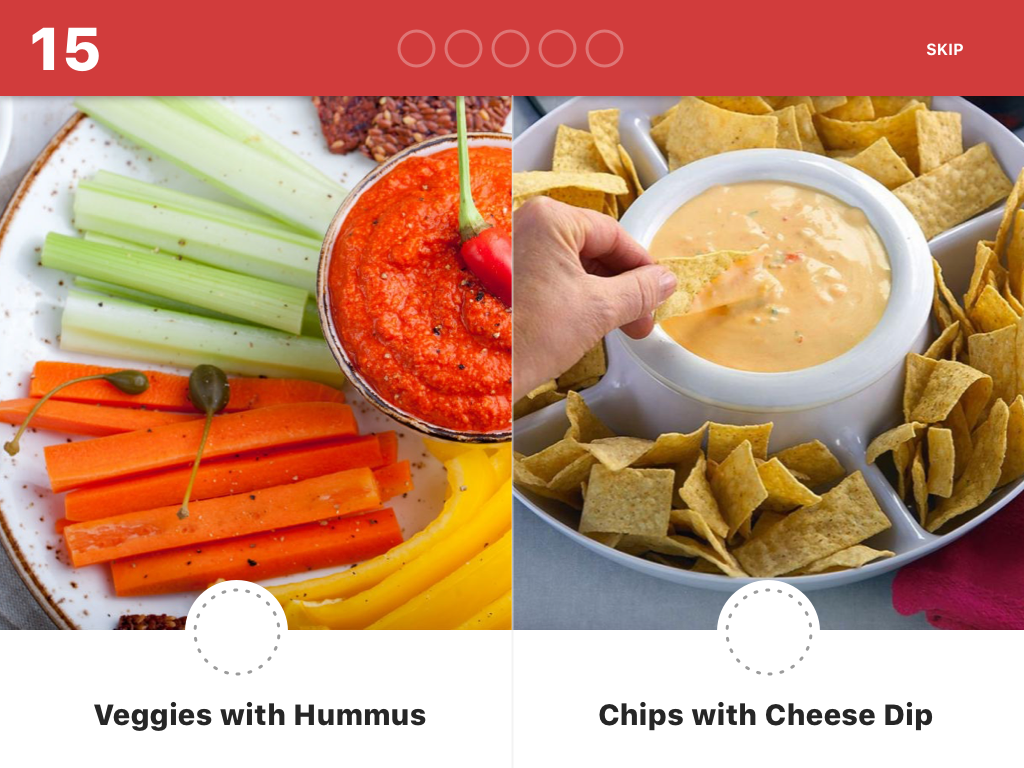Smart Swap
In this personal project I explored how a large grocer like Safeway
could empower students to make healthy choices
and learn about nutrition – one smart swap at a time!
It is hard enough to convince adults to commit to eating healthy – convince kids?!
Healthy eating habits start young and building a foundation around nutritious choices although it may be difficult at times, is critical for future generations’ overall wellness. Childhood Obesity continues to grow as does the risk of the significant health problems associated with it.
Unfortunately, dealing with picky eaters and a multitude of outside triggers like the media, family, and peers makes this problem a bit tougher to tackle. Despite these other influences, our educators are in a prime position to foster healthy habits early on. Safeway is excited to support and empower local elementary schools’ nutrition initiatives through the Smart Swap program. There’s no reason building healthy habits shouldn’t be collaborative, educational and fun!
PROJECT OVERVIEW
Company: Personal
Date: 2019
Timeline: 1 week
Role: Product Designer
Disciplines: Product Strategy, UX Design, Wire-Framing, Flow-Mapping, User Narratives
* This project is in no way affiliated with Safeway. It is a personal concept only *
We need another minute to look at the menu…
Its been quite some time since I was packing my lunch and snack for school, so I set out to chat with people in my network about their experiences with elementary school nutrition. After discussing their roles and school nutrition routines as key stakeholders; there were some shared themes that bubbled up.
Peer pressure is very real even in elementary school – students want to be like other students
A good school is a community and truly supports all of its members
No child is exactly the same, but student’s lunch/snack tendencies fall into 3 general categories
Healthy eating is hard to teach, when junk food is cheap and easily accessible
Student Lunch Themes
Most elementary students’ lunch and snack habits map to one of 3 personas.
Ellie
brings her lunch and snack from home every day – generally includes healthy options. She is sometimes jealous of other students’ snacks and asks her mom if she can have school from time to time. Sometimes she worries about the appearance of her food ever since a kid said the pepper on her tunafish sandwich looked like fly poop.
Ernie
brings lunch from home most days – usually includes chips and sometimes soda. He ends up having school lunch on last minute notice occasionally but it doesn’t bother him much. He doesn’t think too much about his nutrition, just his Cheetos he frequently brings for morning snack.
Illustration Source: http://gallery.wacom.com
Ethan
has been signed up for the school lunch program since the first day of school. He loves the variety of the cafeteria menu and perks of having hot food items. He likes the schedule, but is sometimes envious of his classmates who bring new snacks from home.
Although Ernie is likely to be most in need of our help; the Smart Swap Program emphasizes a multi channel approach to empower all elementary school students. As young children have increasing access to and passion for technology, it was important to capitalize on physical in class opportunities and also digital engagement opportunities when encouraging them to make healthy choices.
So how does this program actually work?
To make an impact with nutrition, its important to have an understanding of Behavior Change.
MOTIVATION + ABILITY + TRIGGER = DESIRED ACTION
This couldn’t be more true with kids. They love games and working to win a fun reward for themselves or their class! Yet being under someone else’s care, often means that a lot of things are out of their control when it comes to ability to complete a task. The food on their plate or in their lunch is often completely out of their control. By focusing on the opportunity at school, students’ ability will be increased. With Safeway’s help, schools can provide healthy snacks and incentivize kids to swap an unhealthy snack with a better option at school. While students have the opportunity to make actual swaps of their snacks at school, they can also play the Smart Swap game and learn about healthier alternatives to a similar snack they eat currently. For example, eat apples with cheese instead of processed crackers with cheese for more vitamins and fiber with a similar crunch! Both of these activities earn points for the student’s classroom increasing their overall motivation.
Let’s start small…
For any project it is important to thing big picture vision, but equally important to figure out an iterative way to get there that adds value along each step of the way.
MVP
Snack Swap Table:
• Safeway will donate healthy snacks to elementary school
• Students are encouraged to swap an unhealthy snack
• If all students in the class successfully eat a healthy snack, the class earns 1 point
Smart Swap Game (Played at home or in classroom):
• Parent creates an account via a code that directly ties them to their child’s school and classroom (Market Research: Remind, Class Dojo, Edmodo)
• Parent’s can add their child as a student (with different permissions)
• Student/Parent/School Admin can view School Goal
• Student/Parent/School Admin can view Class rankings against other classes
• Student/Parent/School Admin can view student ranking against classmates
• School Admin can set School Goal and Competition Rules/Timeline/Prizes
• School Admin can send push reminders
• Student can play game and earn points for class with each correct answer
• Student can watch demo video to learn how to play game
• Student/Parent can adjust level if language/comprehension
• Student/Parent can see their history of right/wrong answers
CONSTRAINTS
• Smart Phone Accessibility
• Parent Influence
• Family Schedules
• Cost
• School Technology Availability
• Age/Ability of Child
• Device Type
FUTURE IDEAS
Swap Share:
• All users can share pictures/text to a feed of swaps they made at home/over the weekend
• All school users can upvote the best at home swaps
• By sharing their at home swaps, they can earn points for their class if they get the most votes
Classroom Swap Trivia Battle:
• There could be a daily nutrition based trivia question highlighting a new Swap. The classes that answer correctly first, earn points
Monthly Swap Recipe:
• Safeway will donate ingredients each month for each student to make a recipe at home with a new Swap Recipe they learned about.
• If they share a picture of their homemade swap creation, their class earns a point.
Example: Safeway provides the ingredients for Cauliflower Pizza Crust and students go home and make the recipe collaboratively with their family. This is a great teaching opportunity for the kids to share their knowledge about the swap and nutrition they gain from cauliflower over regular pizza.
PROJECT SCOPE
Out of Scope (For Project Deliverables)
• Foundation behind Leveling in Game
• Replay
• Feed Sharing
• Monitoring/Reporting
• Onboarding - Relationship model between user types and School, Classroom
• Cost
• School Technology Availability
• Age/Ability of Child
• Contest Creation and Management
I reviewed classroom communication platforms and kids educational games currently in use and got to work on mapping out a more collaborative and fun way to teach kids about healthy habits – and encourage them to keep it up!
Designing with Purpose
Desinging a product for kids is very different from designing for adults. Its not about just dumbing down adult concepts but actually understanding what matters to them and using concepts they are familiar with. Some principles that were important to keep in mind were that kids need: support to fix mistakes, a sense of purpose to contribute and an ability to play and collaborate with others. With these principles at the forefront, I put together the following mockups including a leaderboard, class view, and game interactions for concept testing. Although these screens are presented as static; it would be important to use motion and animation to create delightful moments for the students during the game play and overall app experience. Because so many children have access to tablets, I prioritized this larger horizontal format with the intention that it would be available on standard mobile as well.
* Please note that although it is an important piece, the game onboarding/how-to is omitted from the scope of this project.
Next steps and other considerations…
Moving forward I would want to get more user feedback and possibly conduct more interviews to learn as much as possible. I would also conduct a handful of A/B tests including different implementations of the leaderboard/progress indication, and the main game play view selections. Working with an illustrator to design an even more immersive experience for the kids would be a game changer. It also goes without saying, that if this product was actually being built, there would be a bunch of collaboration with Engineering to understand technical constraints and iterative development.
* The visual design of the app was intentionally left to a bare minimum due to time constraint and plan for future iterations and experimentation.

